Let’s be real: running sales at a small business can feel like juggling flaming bowling pins while riding a unicycle—blindfolded. You’re chasing leads, updating spreadsheets, sending follow-ups, and somewhere in there, you’re supposed to actually sell. I’ve seen firsthand (and lived through) the chaos that comes from trying to scale sales with a lean team and a mountain of manual work. The good news? The right sales tools for small business can take you from “barely keeping up” to “running a sales machine,” even if your team is just you and your dog (who, let’s face it, is more interested in treats than CRM hygiene).
The numbers back this up: ), and . With lean teams and limited budgets, small businesses need tools that automate the boring stuff, help you find and close more deals, and don’t require a PhD in software setup. That’s exactly what this list is about: the top-rated sales enablement tools for small business, with a focus on automation, usability, and ROI—so you can spend less time on grunt work and more time actually selling.
Why Small Businesses Need the Right Sales Tools
Let’s talk about the daily grind. In the world of small business, everyone wears multiple hats—sometimes all at once. There’s no dedicated admin to handle data entry, no IT team to set up complex software, and definitely no time to waste on tools that add more work than they save. Out of . That means every minute spent on manual tasks is a minute not spent selling.
The biggest pain points I hear from small business sales teams? Manual data entry, forgotten follow-ups, leads slipping through the cracks, and the constant back-and-forth between spreadsheets and emails. It’s no wonder ). But here’s the kicker: the right sales tools for small business can automate low-value work, keep your pipeline organized, and make sure nothing falls through the cracks. In fact, automating follow-ups and data capture can .
And it’s not just about saving time. , and those that do are seeing real results—more leads, faster sales cycles, and a fighting chance against bigger competitors. In short: the right sales enablement tools for small business are the secret weapon for growth, efficiency, and leveling the playing field.
How We Chose the Top-Rated Sales Enablement Tools for Small Business
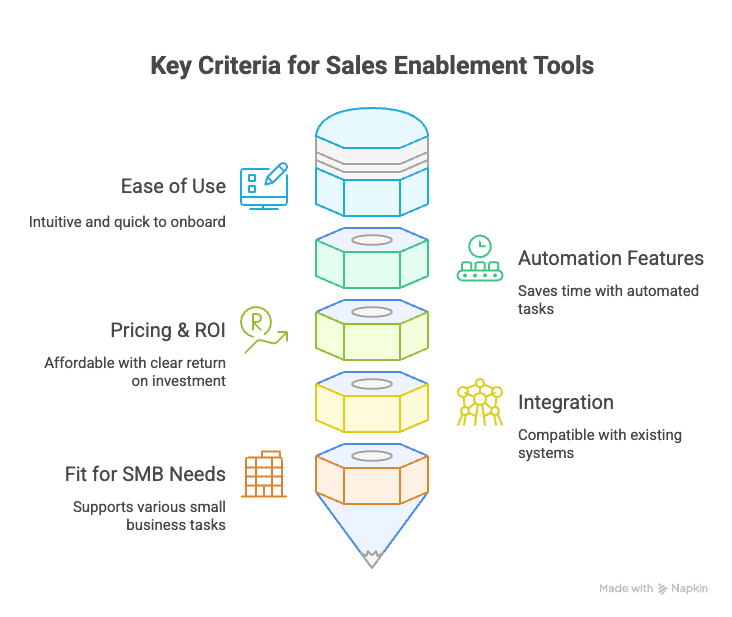
With so many sales tools out there, how do you pick the ones that actually make a difference for small teams? Here’s the framework I used to curate this list:
- Ease of Use: If it takes a week to set up or requires a full-time admin, it’s out. These tools are intuitive, quick to onboard, and designed for non-technical users.
- Automation Features: The best sales automation tools for small business save you time—think automated data entry, follow-ups, lead capture, and more.
- Pricing & ROI: Small business budgets are tight. I focused on tools with free plans, affordable tiers, or clear ROI for what you pay.
- Integration: The top-rated sales enablement tools for small business play nicely with your existing stack—Gmail, Google Workspace, CRMs, and more.
- Fit for SMB Needs: Whether you’re a solo founder or a small team, these tools help with lead generation, CRM, outreach, and everything in between.
Each tool below is compared by key features, ideal users, pricing, and main advantages—so you can quickly find what fits your workflow and goals.
The Best Sales Tools for Small Business at a Glance
Here’s a quick comparison table to help you scan the landscape. (Spoiler: there’s no one-size-fits-all—mix and match for your perfect sales stack.)
| Tool Name | Key Features | Ideal Users | Pricing (USD) | Main Advantages |
|---|---|---|---|---|
| Thunderbit | AI web scraping, subpage scraping, 2-click setup, auto field recognition | Non-technical sales, marketing, real estate teams | Free trial; pay-as-you-go credits | No-code data extraction, instant lead lists, exports to Excel/Sheets/Notion/Airtable |
| HubSpot Sales Hub | CRM, pipeline, email tracking, marketing automation | Growing SMBs needing integrated sales/marketing | Free CRM; Starter $15/user/month | Unified platform, easy to use, scales with your team |
| Pipedrive | Visual pipeline, workflow automation, reminders | Small sales teams focused on process | $15/user/month+ | Intuitive, sales-focused, strong automation |
| Close | Built-in calling, SMS, email, pipeline reporting | Inside sales teams, phone-heavy outreach | $49/user/month+ | All-in-one comms, boosts call productivity |
| Zoho CRM | Customizable CRM, workflow automation, AI assistant | SMBs needing multi-department coordination | $14/user/month+ | Highly flexible, scalable, affordable |
| Freshsales | AI lead scoring, workflow automation, built-in dialer | Small teams, quick setup | Free plan; $15/user/month+ | User-friendly, AI insights, integrates with Freshworks |
| Apollo.io | B2B contact database, email automation, prospecting | SMBs needing efficient lead gen | Free tier; $49/user/month+ | Huge data set, data + outreach in one |
| Groove | Email sequences, workflow automation, analytics | Small teams using Salesforce/Gmail | ~$50–80/user/month | Cost-effective, integrates with inbox/CRM |
| Outreach | Multichannel sequences, automation, analytics | Ambitious SMBs scaling outbound sales | Custom pricing | Enterprise-grade automation, AI insights |
| Mailshake | Email outreach, AI writer, A/B testing | Small teams, non-tech users | $58/user/month+ | Simple, quick setup, great for cold outreach |
| Yesware | Email tracking, templates, reporting | Sales teams using Gmail/Outlook | Free plan; $15/user/month+ | Lives in inbox, easy onboarding, analytics |
| Salesloft | Cadence automation, analytics, coaching | SMBs scaling sales process | ~$75–125/user/month | Robust automation, coaching, pipeline analytics |
| Nutshell | CRM, pipeline, automation, email marketing | Small teams wanting all-in-one | $19/user/month+ | Simple, bundled CRM + marketing, great support |
| Keap | CRM, marketing automation, payments | SMBs needing sales + marketing + payments | $149/month+ | All-in-one, visual workflow builder, onboarding help |
| Copper | CRM for Google Workspace, auto data entry | Teams using Gmail/Google | $29/user/month+ | Deep Google integration, minimal data entry |
Thunderbit: AI-Powered Lead Discovery for Non-Technical Teams
Let’s start with a tool that’s close to my heart (and my day-to-day): . If you’ve ever wished you could magically turn any website into a spreadsheet of leads—without writing code, learning XPath, or bribing your IT friend with pizza—Thunderbit is built for you.
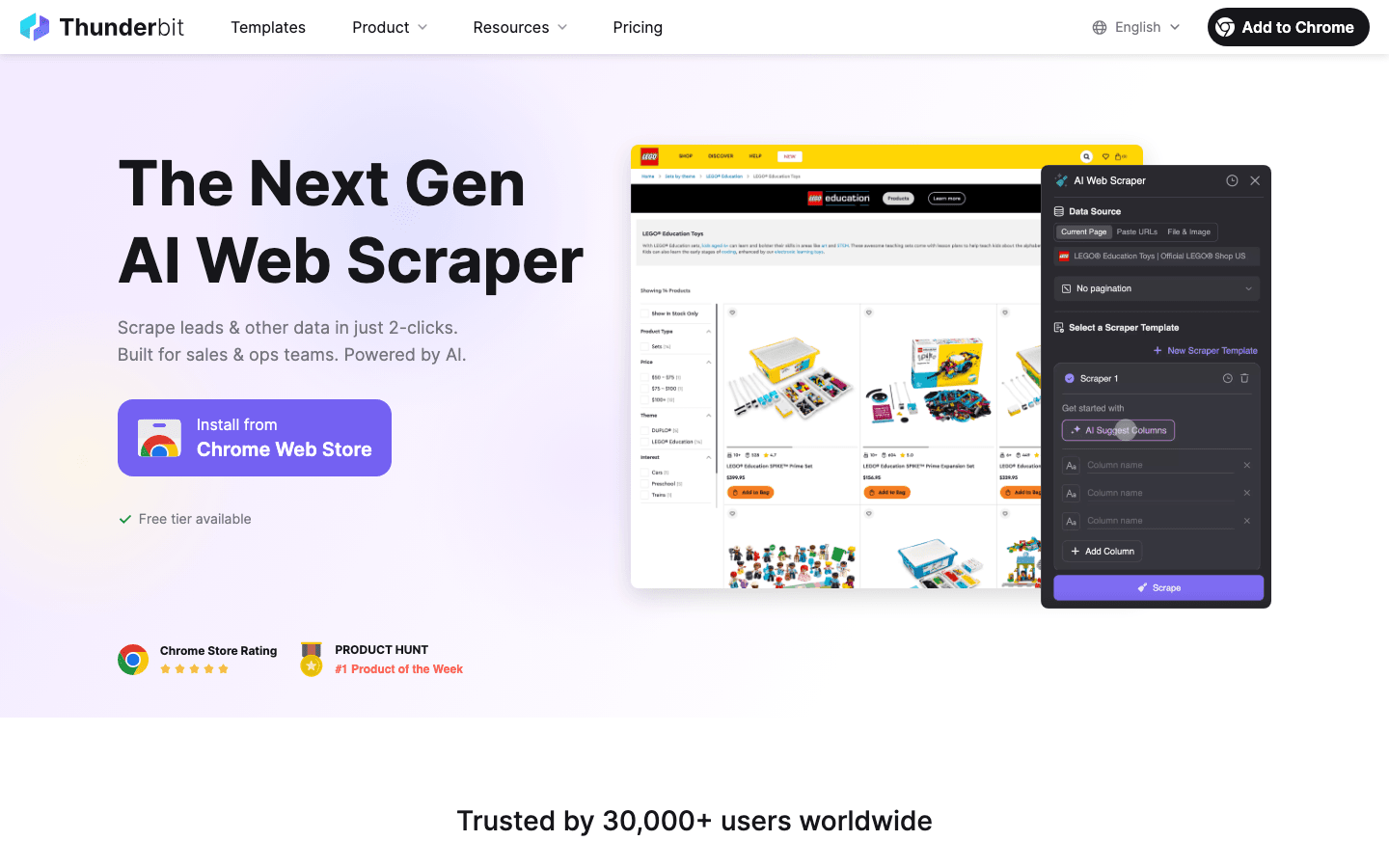
Here’s the deal: most small businesses don’t struggle because they lack leads. The real bottleneck is time—specifically, the hours lost to manually copying and pasting contact info, or trying to wrangle messy web data into something you can actually use. Thunderbit’s AI Web Scraper flips that script. With just two clicks, you can extract emails, phone numbers, product info, or reviews from directories, forums, or even competitor sites. The “AI Suggest Fields” button reads the page and figures out what’s important—no setup, no coding, no stress.
What really sets Thunderbit apart is its . Say you’re looking at a list of vendors, and each one has a detail page with more info. Thunderbit will visit each subpage, grab the extra details, and enrich your table—automatically. It even handles tricky stuff like infinite scroll, images, and PDFs. You can export everything to Excel, Google Sheets, Notion, or Airtable in seconds.
I’ve seen non-technical sales teams use Thunderbit to pull hundreds of leads from yellow pages, supplier directories, or real estate listings—without ever touching a line of code. It’s perfect for “small team, big ambition” operations. And because you can add custom AI prompts for each field, you can even label, categorize, or translate data on the fly.
Thunderbit isn’t just another CRM or outreach tool—it’s the missing link between “finding leads” and “managing leads.” By automating the data entry and discovery process, it feeds your CRM with high-quality, structured data, so you can focus on closing deals, not wrangling spreadsheets. If your goal is to get 10 new qualified leads a day without burning out, Thunderbit is a no-brainer.
Want to see it in action? Check out the or dive into more use cases on the .
HubSpot Sales Hub: All-in-One CRM and Sales Automation
If you’re looking for a “one-stop shop” for sales and marketing, is a classic pick. At its core, HubSpot gives you a free CRM—contact management, pipeline tracking, email templates, meeting scheduling, and more. As your needs grow, you can unlock advanced features like sales automation workflows, reporting, and AI-powered lead scoring.
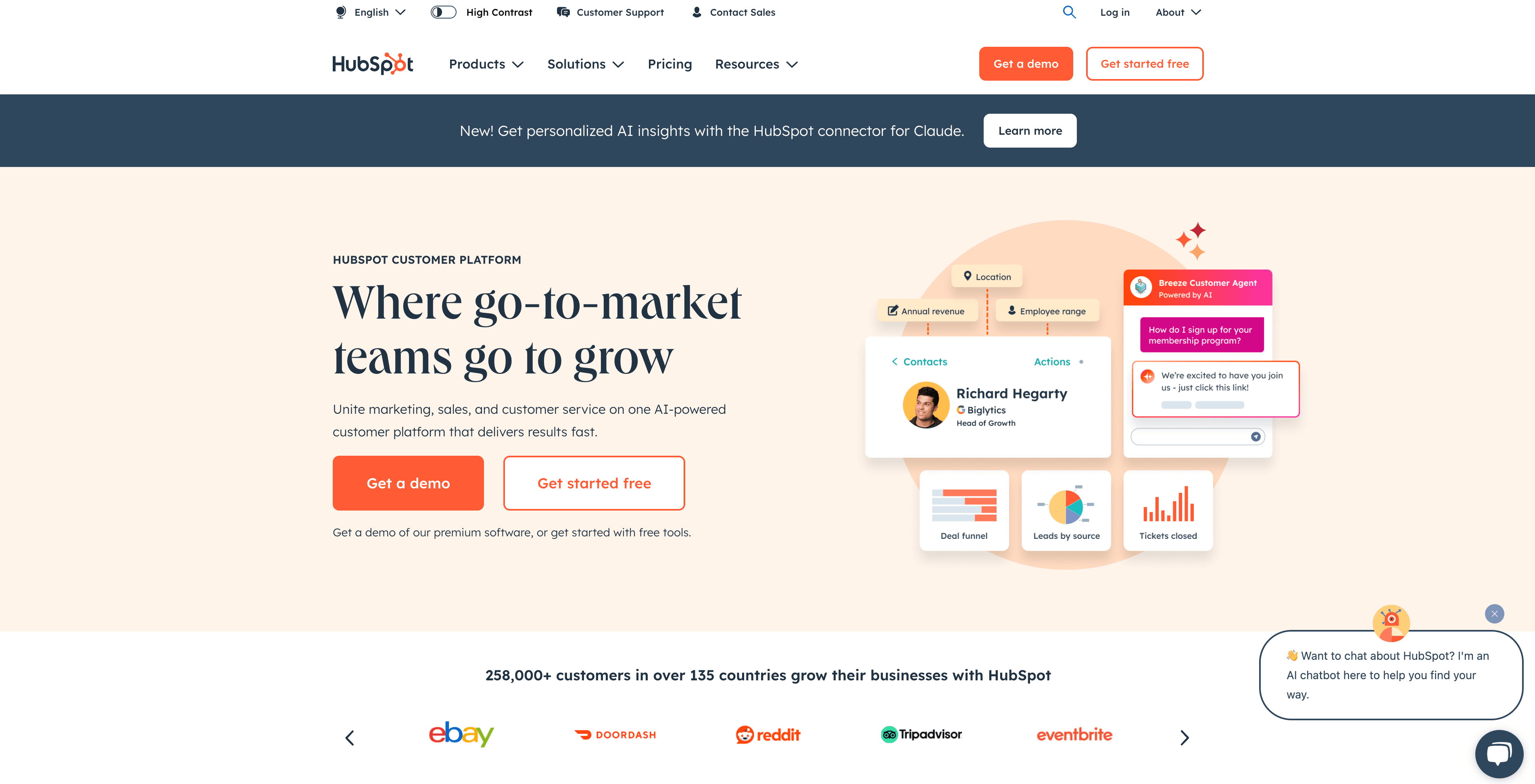
The big draw? HubSpot brings sales and marketing together. Your sales team can see every marketing touchpoint (like newsletter clicks or ad engagement) right on the contact’s timeline. The interface is famously user-friendly, and there’s a huge library of templates and tutorials to help you get started. Plus, with , it fits into almost any tech stack.
Freemium pricing means you can start for free and only pay as you need more advanced features. For small businesses formalizing their sales process, HubSpot is a safe, scalable bet—and the learning curve is gentle enough that you won’t need a weeklong retreat just to get your team onboard.
Pipedrive: Visual Sales Pipeline and Workflow Automation
is the “kanban board” of sales CRMs. If you’re a visual thinker who loves dragging deals from stage to stage, you’ll feel right at home. Pipedrive’s interface is all about clarity—see your deals, next steps, and bottlenecks at a glance.
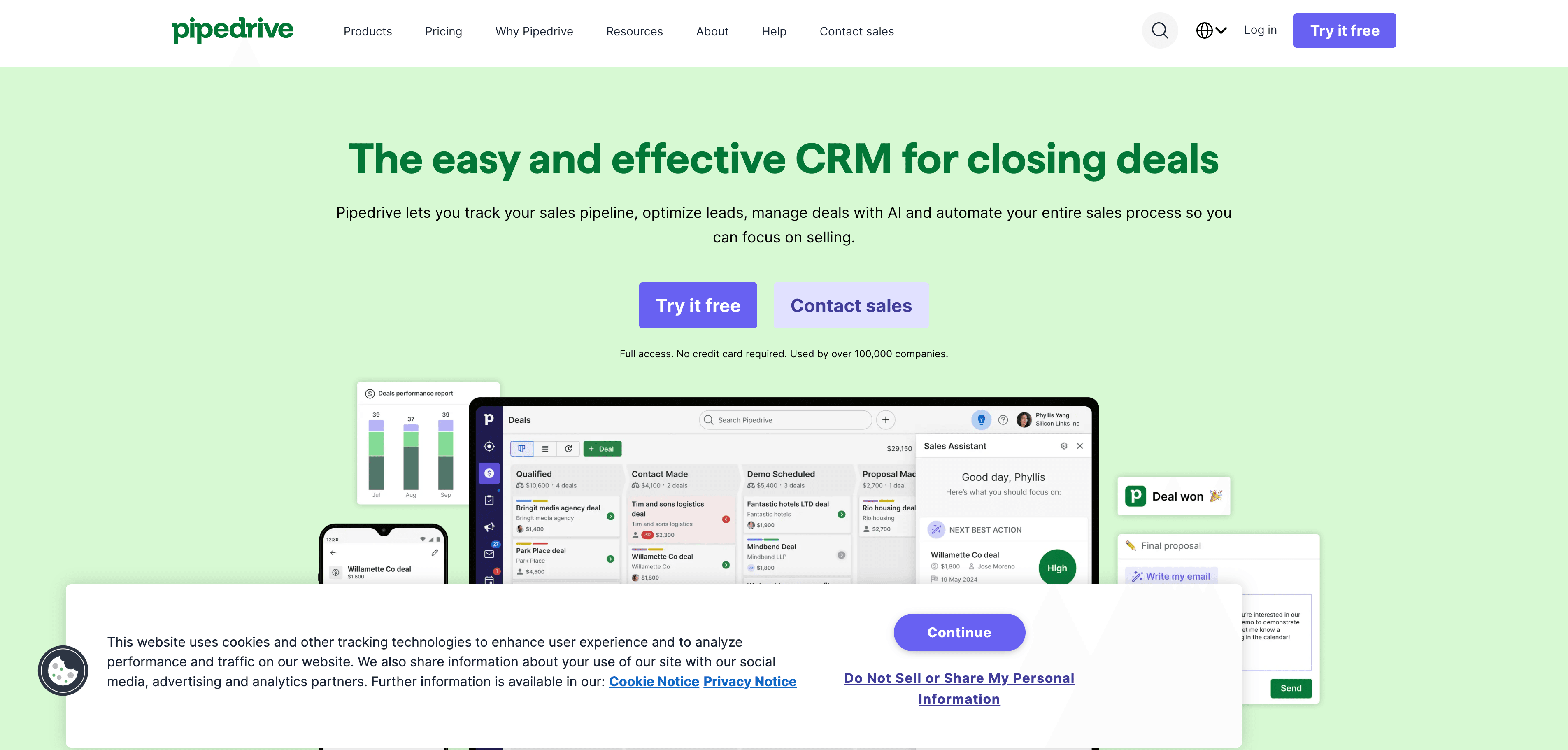
What makes Pipedrive shine for small teams? Quick setup, easy customization, and strong workflow automation. You can automate repetitive tasks (like sending follow-up emails or creating reminders) and integrate with over 400 apps. The , making it affordable for lean teams.
If you want a CRM that your team will actually use (and keep updated), Pipedrive’s intuitive design and sales-focused features are hard to beat.
Close: Multichannel Outreach for Inside Sales Teams
is built for teams that live and die by the phone. It’s a CRM, call center, and email tool rolled into one. The standout feature? Built-in calling with a Power Dialer, so you can call through your lead list without ever picking up your phone. It also supports SMS, email sequences, and automatic activity logging.
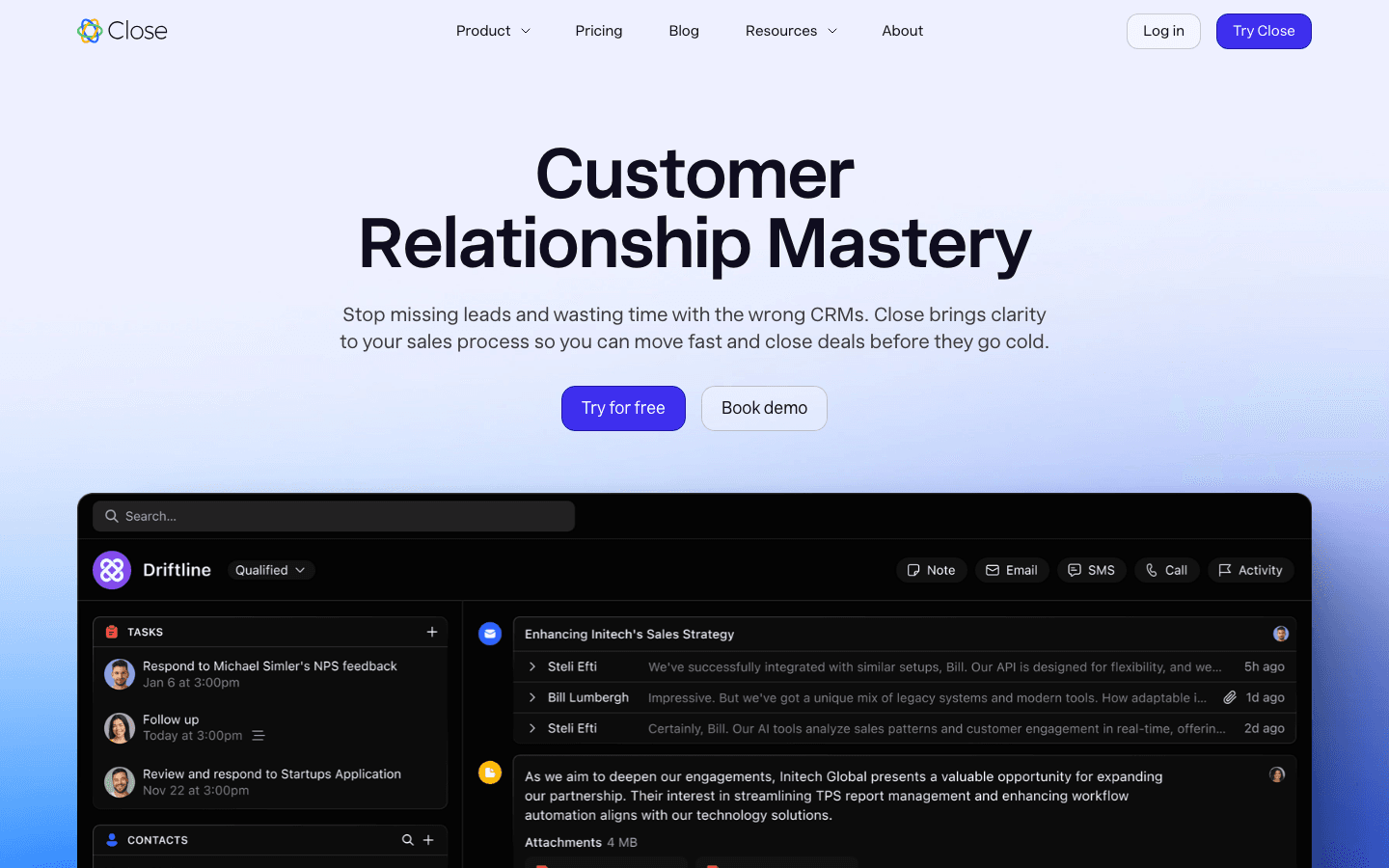
For small teams doing high-touch outreach (think SaaS startups, real estate, or agencies), Close is a productivity booster. You get real-time email tracking, call recording, and a unified inbox for all channels. The , and higher tiers add features like call coaching and advanced reporting.
If your sales process is all about conversations, Close helps you have more of them—with less busywork.
Zoho CRM: Customizable CRM for Growing Businesses
is the Swiss Army knife of CRMs. It’s highly customizable, scalable, and integrates with a huge suite of Zoho apps (from marketing to finance to support). You can tailor fields, layouts, and even automation workflows to fit your unique process—no coding required.
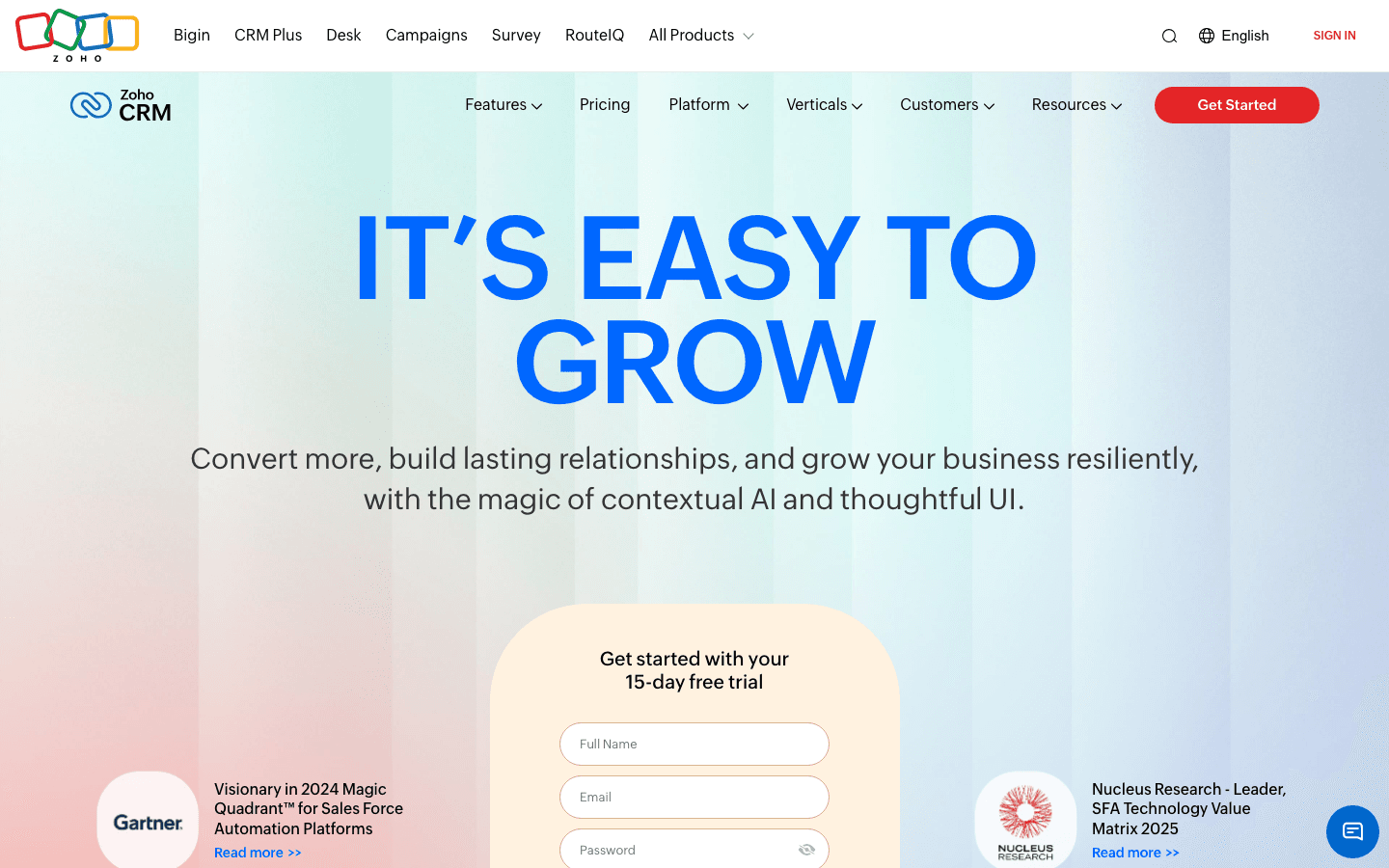
Zoho’s AI assistant, Zia, helps with lead scoring and workflow automation. The , making it an affordable choice for SMBs that want flexibility without breaking the bank.
If you’re looking for a CRM that can grow with you—and maybe even run your whole business—Zoho CRM is a strong contender.
Freshsales: Intuitive CRM with Built-In Automation
(from Freshworks) is all about simplicity and smarts. The interface is clean and modern, with a dashboard that gives you a clear snapshot of your pipeline and tasks. Freshsales’ “Freddy AI” scores leads, predicts deal outcomes, and suggests next steps—like having a virtual sales analyst on your team.
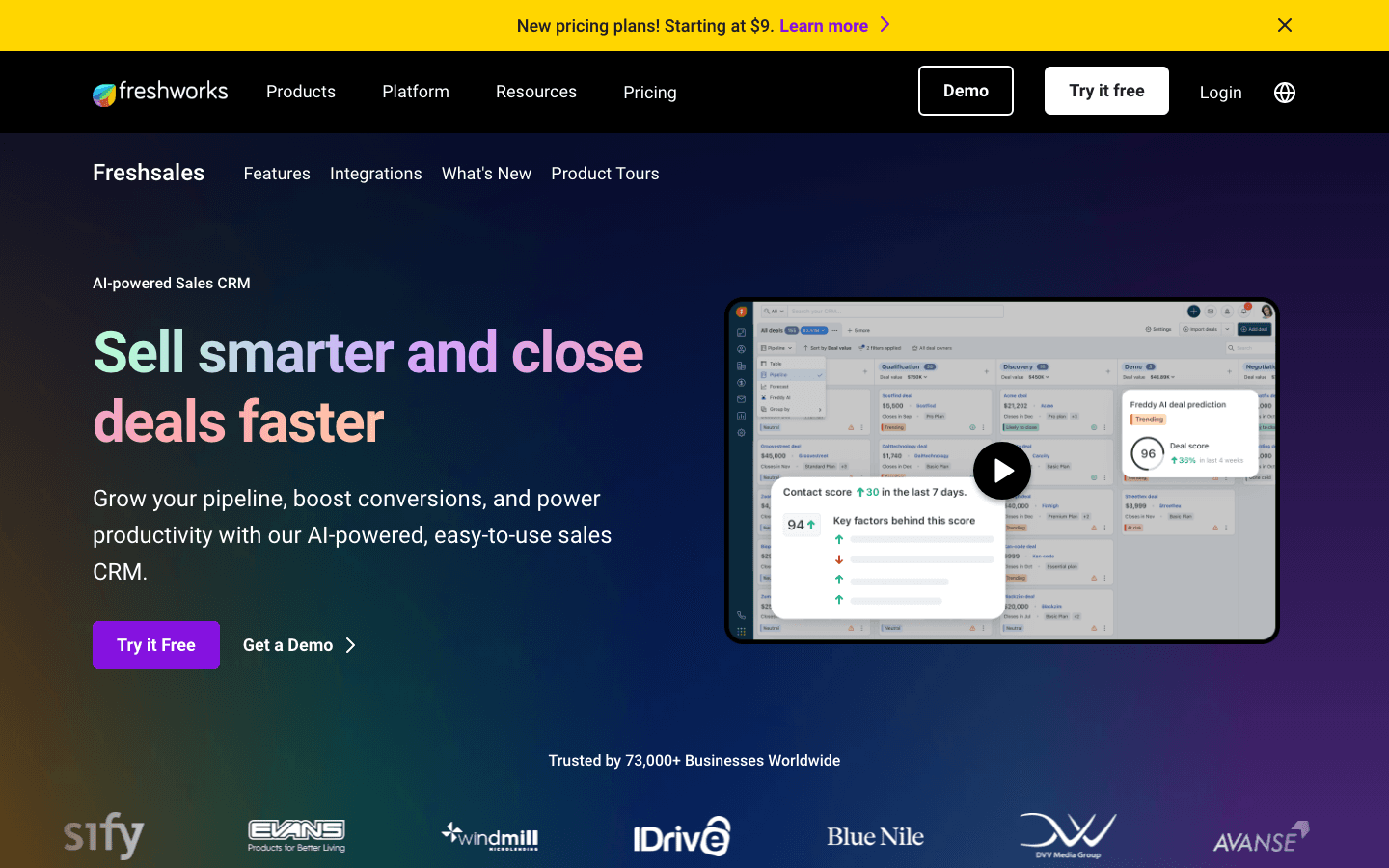
You get built-in phone dialing, email templates, and workflow automation. There’s a for up to 3 users, with paid plans starting at $15/user/month. If you want a CRM that’s easy to set up and packed with automation, Freshsales is a great pick—especially if you’re already using other Freshworks tools.
: All-in-One Prospecting and Outreach
is a powerhouse for B2B prospecting. It combines a massive contact database (over 200 million contacts) with outreach tools—so you can find, filter, and engage leads all in one place. Set up email sequences, use the Chrome extension for LinkedIn prospecting, and track engagement.
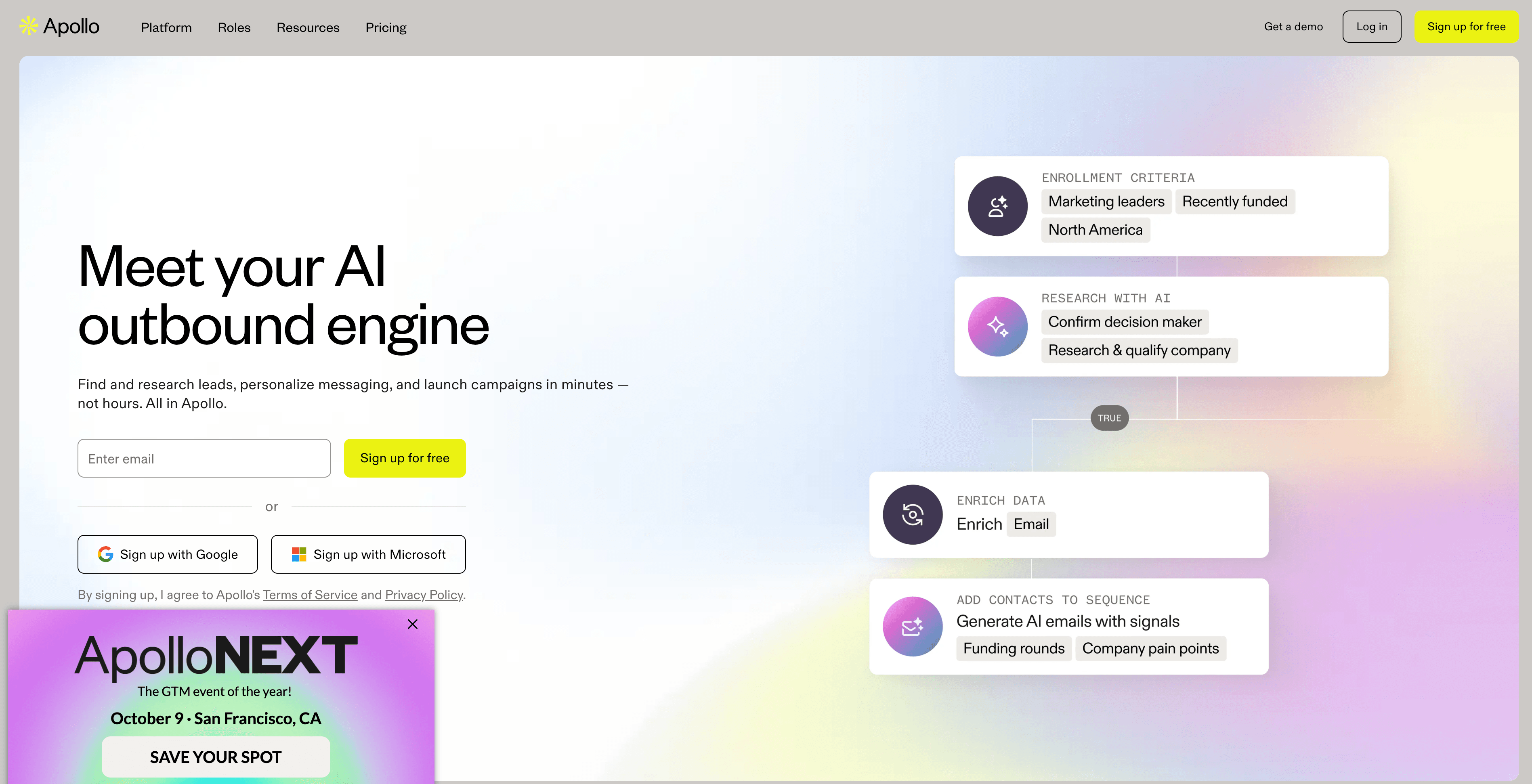
Apollo’s gives you a taste, and paid plans start at $49/user/month. For small businesses that need to build a sales funnel from scratch, Apollo is like having an extra SDR on your team—without the extra salary.
Groove: Sales Engagement Platform for Small Teams
is a sales engagement platform that lives in your inbox (Gmail or Outlook) and syncs with Salesforce. It automates email sequences, logs activities to CRM, and provides analytics—all without forcing you to switch tabs.
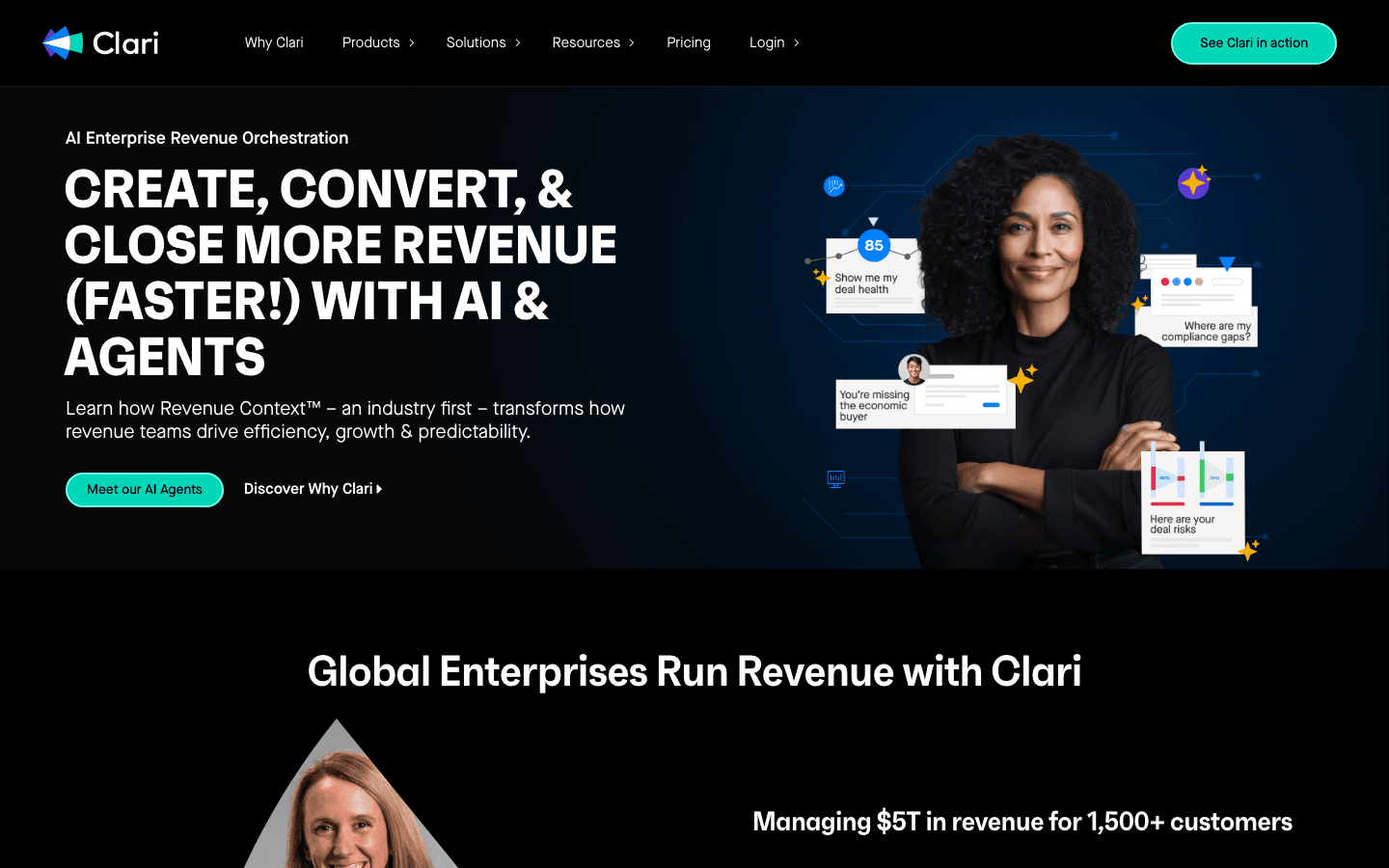
Groove is cost-effective (typically $50–80/user/month) and easy to adopt, especially for teams already using Salesforce and Google Workspace. If you want to streamline outreach and follow-ups directly from your inbox, Groove is a smart, lightweight alternative to more complex platforms.
Outreach: Advanced Sales Automation for Ambitious SMBs
is the “Formula 1 car” of sales automation. It’s packed with advanced features: multichannel sequences (email, call, LinkedIn), AI-driven workflow recommendations, predictive forecasting, and deep analytics. Outreach is designed for teams ready to scale outbound sales aggressively.
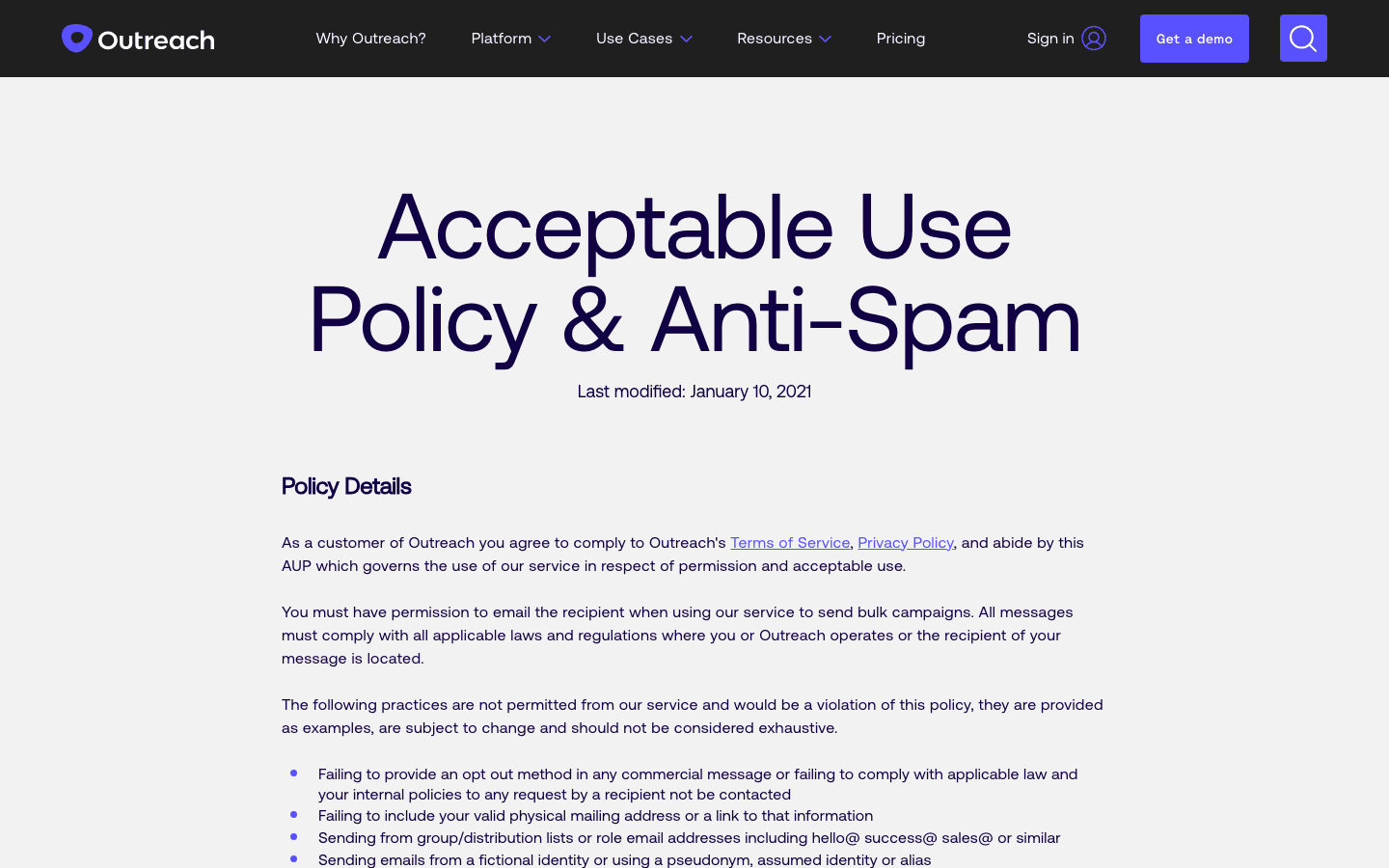
Custom pricing means it’s an investment, but for ambitious SMBs looking to run a high-volume, metrics-driven sales engine, Outreach delivers enterprise-grade automation and insights. Just be prepared for a learning curve—it’s powerful, but you’ll want to dedicate time to onboarding.
Mailshake: Simple Email Outreach for Small Businesses
is all about making cold outreach painless. Upload your list, write your emails, set your follow-up schedule, and Mailshake handles the rest. Features like AI-powered email writing, A/B testing, and deliverability tools help you get more replies.
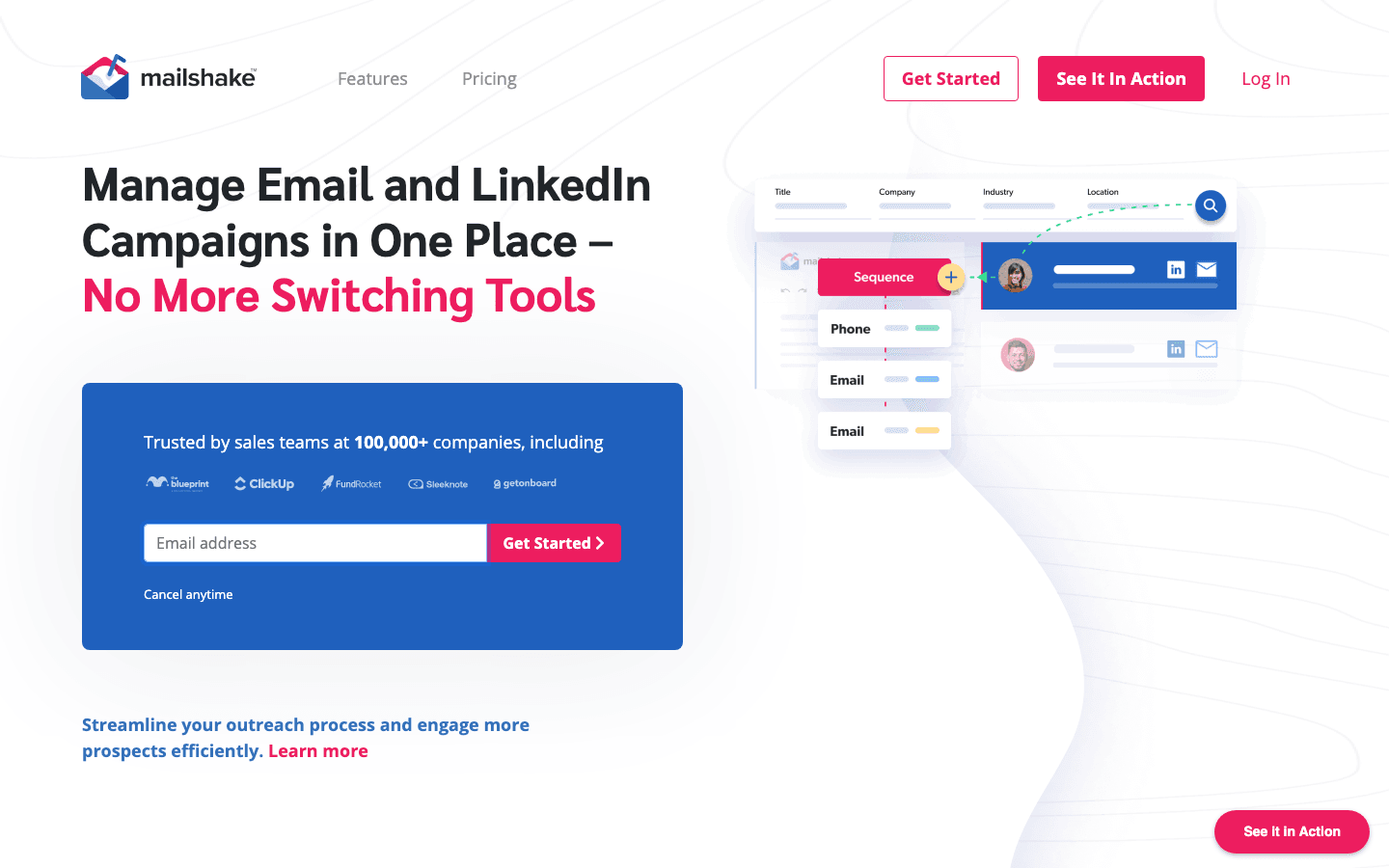
Mailshake is easy to use (even for non-technical users) and starts at $58/user/month. If your main goal is sending personalized cold emails at scale—without the complexity of a full sales engagement platform—Mailshake is a top choice.
Yesware: Email Tracking and Analytics for Sales Teams
lives right inside your Gmail or Outlook inbox, adding superpowers like email tracking (opens, clicks, attachment views), templates, and reporting. You can send personalized mass emails, schedule follow-ups, and see which messages get the best results.
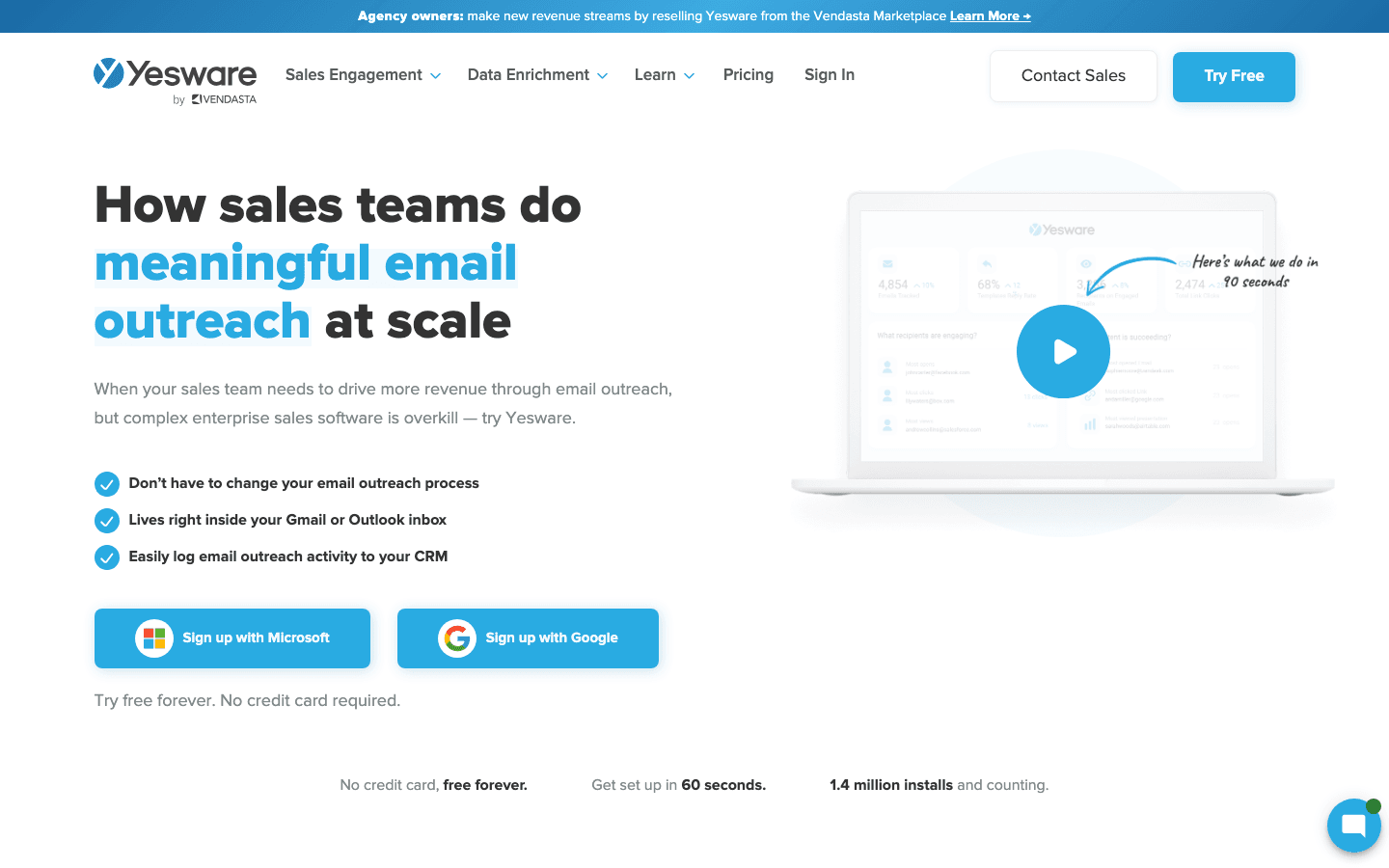
Yesware’s is great for trying it out, and paid plans start at $15/user/month. For small teams who want to optimize email outreach without leaving their inbox, Yesware is a no-brainer.
Salesloft: Sales Automation for Growing Teams
is another leader in sales engagement, offering cadence automation (multi-touch sequences), analytics, and AI-powered coaching. It’s designed for teams that want to scale outbound sales with structure and consistency.
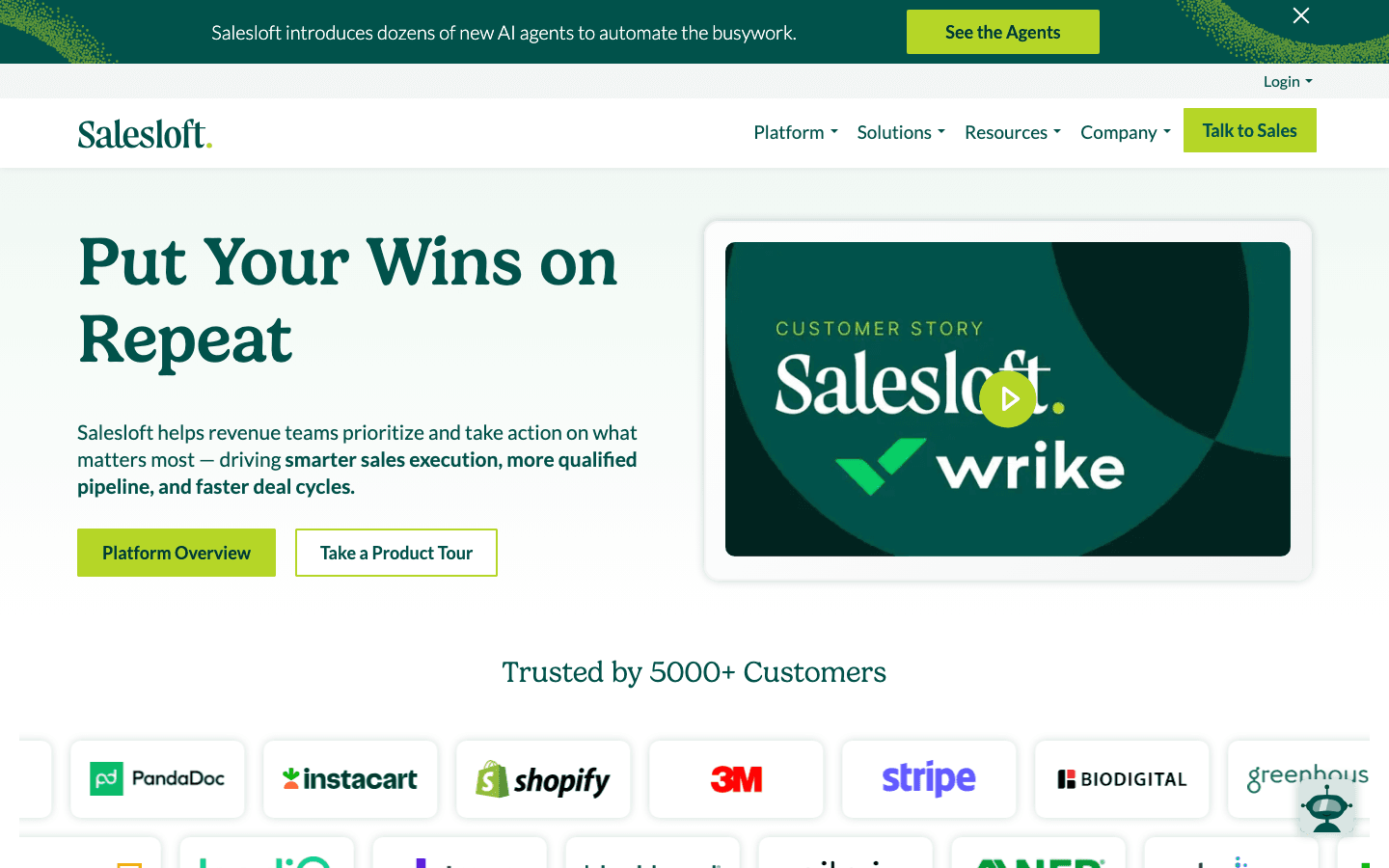
Salesloft’s pricing is similar to Outreach (typically $75–125/user/month), and it integrates with major CRMs. If you’re building a growing sales team and want to ensure every lead gets the right number of touches, Salesloft brings enterprise-level process to SMBs.
Nutshell: Simple CRM with Built-In Automation
is an all-in-one CRM that combines contact management, pipeline tracking, and email marketing. It’s built for small teams who want everything in one place—without the bloat or steep learning curve.
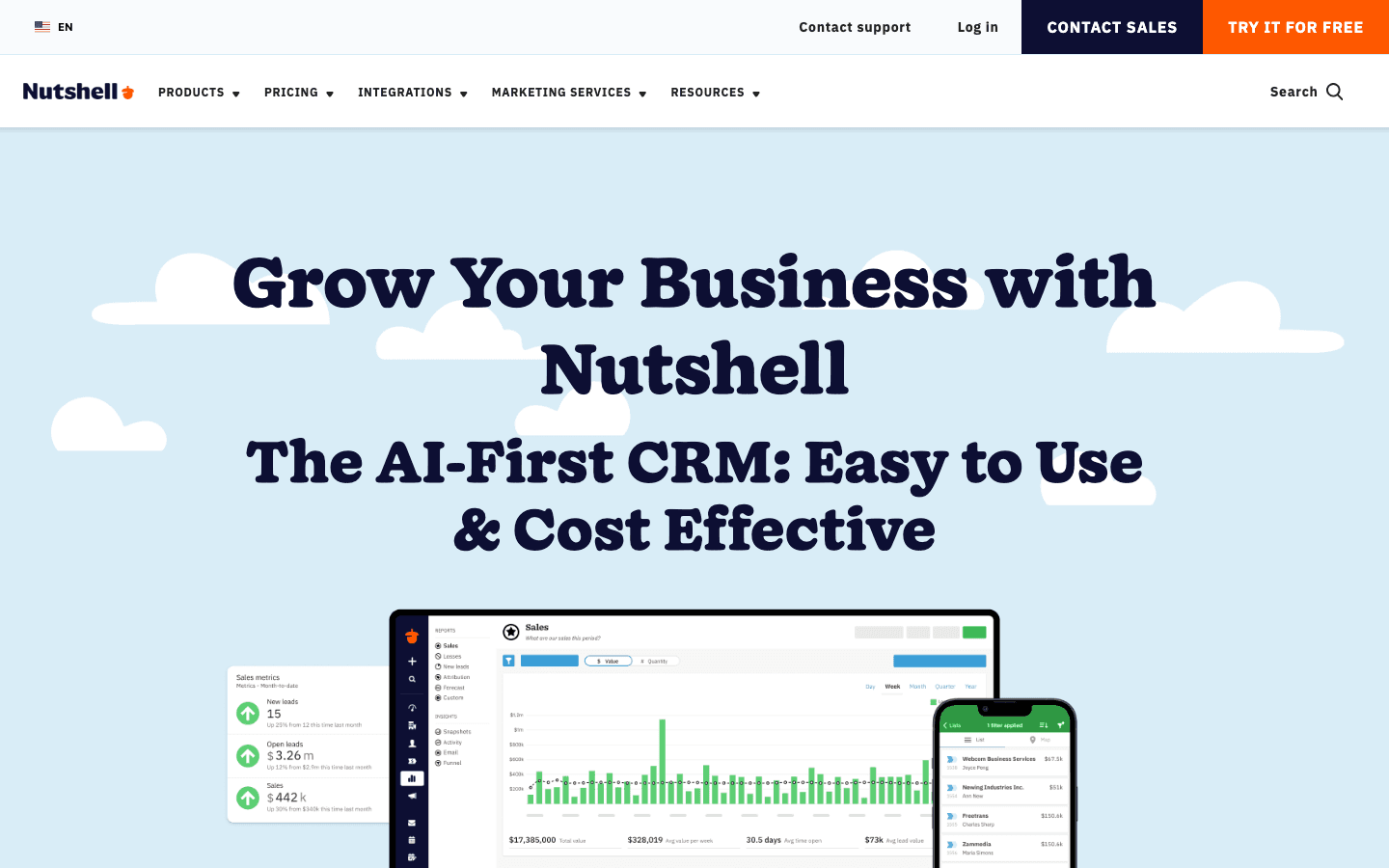
Nutshell’s interface is intuitive, with drag-and-drop dashboards and built-in collaboration. Pricing starts at $19/user/month, and support is top-notch. If you want a CRM that “just makes sense” and doesn’t require a dedicated admin, Nutshell is a friendly Swiss Army knife for sales and marketing.
Keap: CRM and Marketing Automation for Small Businesses
(formerly Infusionsoft) is an all-in-one platform that combines CRM, marketing automation, appointment scheduling, and payment processing. Its visual campaign builder lets you automate complex workflows (like sending follow-ups, reminders, and invoices) with drag-and-drop simplicity.
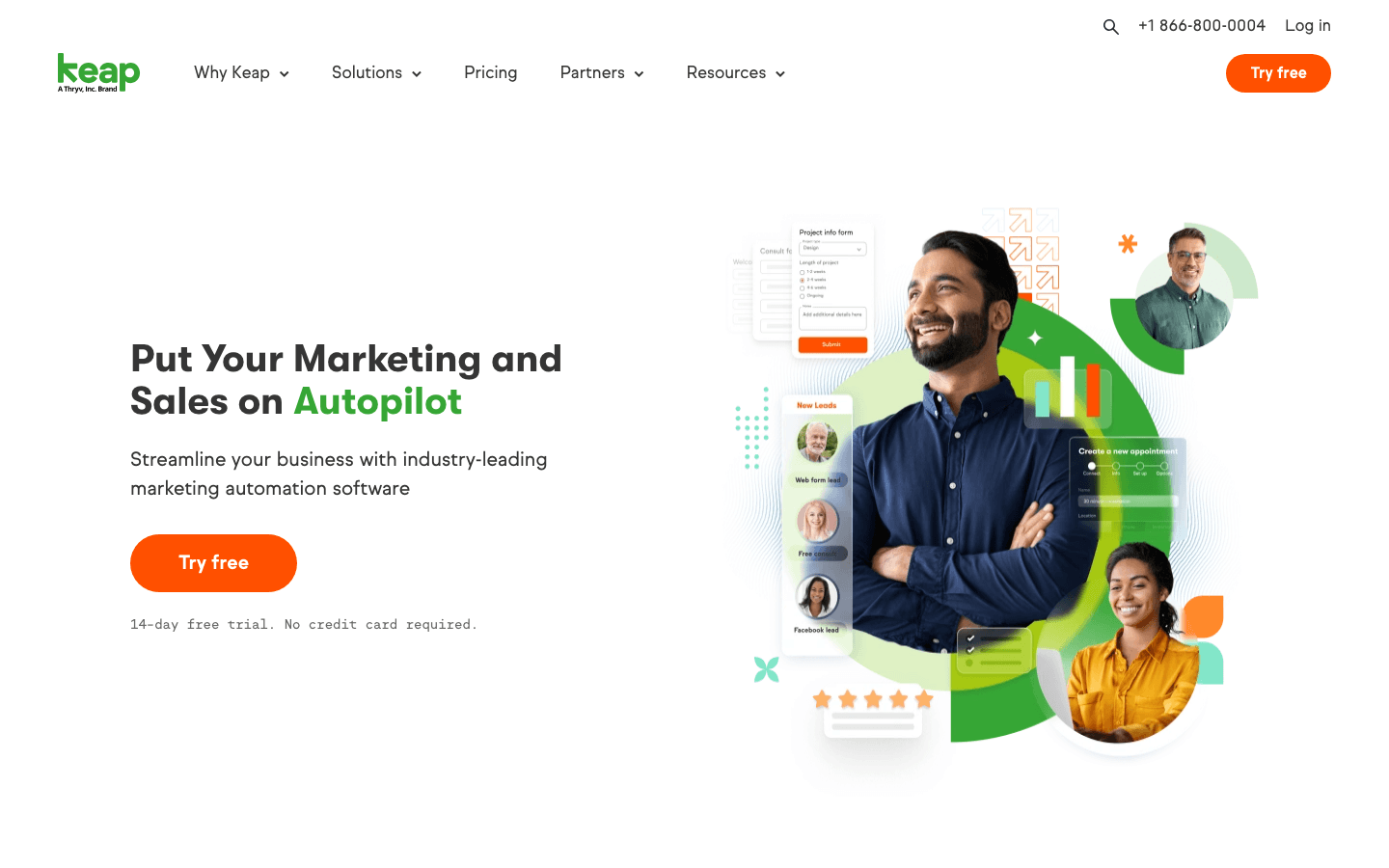
Keap is built for entrepreneurs and small teams who want to automate the entire customer lifecycle. Pricing starts at $149/month (for 2 users), and every new customer gets a dedicated onboarding coach. If you want to streamline sales, marketing, and payments in one place, Keap is a powerful option.
Copper: CRM Designed for Google Workspace Users
is the CRM for teams that live in Gmail and Google Workspace. It integrates deeply with Gmail, Calendar, and Drive—so you can add leads, track deals, and manage contacts without ever leaving your inbox.

Copper automates data entry by pulling info from your emails, and its interface feels like a natural extension of Google’s design. Pricing starts at $29/user/month, and it’s especially popular with tech startups, real estate, and consulting teams who want a CRM that “just works” with their existing workflow.
How to Choose the Best Sales Automation Tools for Your Small Business
With so many great options, how do you pick the right sales tools for your small business? Here’s how I approach it:
- Start with Your Biggest Bottleneck: Is it lead generation, follow-up, pipeline management, or something else? Pick the tool that solves your top pain point first.
- Map Your Workflow: Sketch out your typical sales process. Where are you losing time? Where do leads fall through the cracks? Look for tools that automate or streamline those steps.
- Consider Team Tech Comfort: The best tool is the one your team will actually use. If you’re non-technical, prioritize simplicity and a gentle learning curve.
- Test with Free Trials: Most tools offer free trials or freemium versions. Get hands-on, involve your team, and see what fits your real-world workflow.
- Think Integration: Choose tools that play nicely with your existing stack (email, calendar, CRM). The less double entry, the better.
- Mix and Match: Often, the best sales stack is a combination—like Thunderbit for lead discovery, Pipedrive for pipeline, and Mailshake for outreach. Don’t be afraid to build your own toolkit.
- Budget for ROI: Don’t just look at cost—consider the time and revenue a tool can save or generate. Sometimes a higher-priced tool pays for itself many times over.
And remember: start simple. You can always add more tools as your business grows.
Conclusion: Building a High-Impact Sales Stack on a Small Business Budget
Here’s the bottom line: you don’t need a Fortune 500 budget to run a high-impact sales operation. With the right mix of sales enablement tools for small business—especially those designed for non-technical users—you can automate away the grunt work, keep your pipeline full, and focus on what really matters: building relationships and closing deals.
Prioritize usability, automation, and ROI. Experiment with free trials, combine tools to fit your workflow, and don’t be afraid to start small. Whether you’re a solo founder or a scrappy team of five, today’s sales technology levels the playing field—letting you compete with the big guys, even if your “sales team” is just you (and maybe your dog, who still prefers treats over CRM data).
Ready to build your own sales stack? Try out the tools that fit your needs, and watch your sales process go from chaos to clarity. And if you want to see how AI can supercharge your lead discovery, give a spin—it might just be the secret weapon your small business needs.
For more deep dives, tips, and sales automation guides, check out the . Here’s to more sales wins, less busywork, and a lot fewer flaming bowling pins in your day.
Written by Shuai Guan, Co-founder & CEO at Thunderbit. I’ve spent years helping small businesses automate, scale, and win more deals—one smart tool at a time.
FAQs
1. Why are sales enablement tools important for small businesses?
Sales enablement tools help small businesses automate repetitive tasks, streamline lead generation, manage follow-ups, and organize pipelines. This saves time, reduces manual errors, and boosts efficiency—especially for teams with limited resources or solo entrepreneurs.
2. What features should small business owners look for in a sales tool?
Key features include ease of use, automation capabilities, affordable pricing, integration with existing tools (like Gmail or CRMs), and specific functionalities like lead generation, email tracking, and pipeline management tailored to small teams.
3. Which sales tools are best for non-technical users?
Tools like Thunderbit, Pipedrive, and Mailshake are designed with simplicity in mind. Thunderbit, for example, offers no-code AI-powered web scraping for lead discovery, while Pipedrive and Mailshake provide intuitive interfaces with minimal setup.
4. Can small businesses afford these sales enablement tools?
Yes, many tools offer free plans or affordable pricing tiers. For example, HubSpot and Freshsales have free versions, and tools like Zoho CRM and Yesware start as low as $14–15/user/month, making them accessible to small business budgets.
5. How do I choose the right sales tool for my business?
Start by identifying your biggest sales bottleneck—whether it’s lead generation, follow-up, or pipeline tracking. Then, look for a tool that addresses that need, fits your workflow, integrates with your existing systems, and offers a free trial so you can test it out before committing.
Learn More: